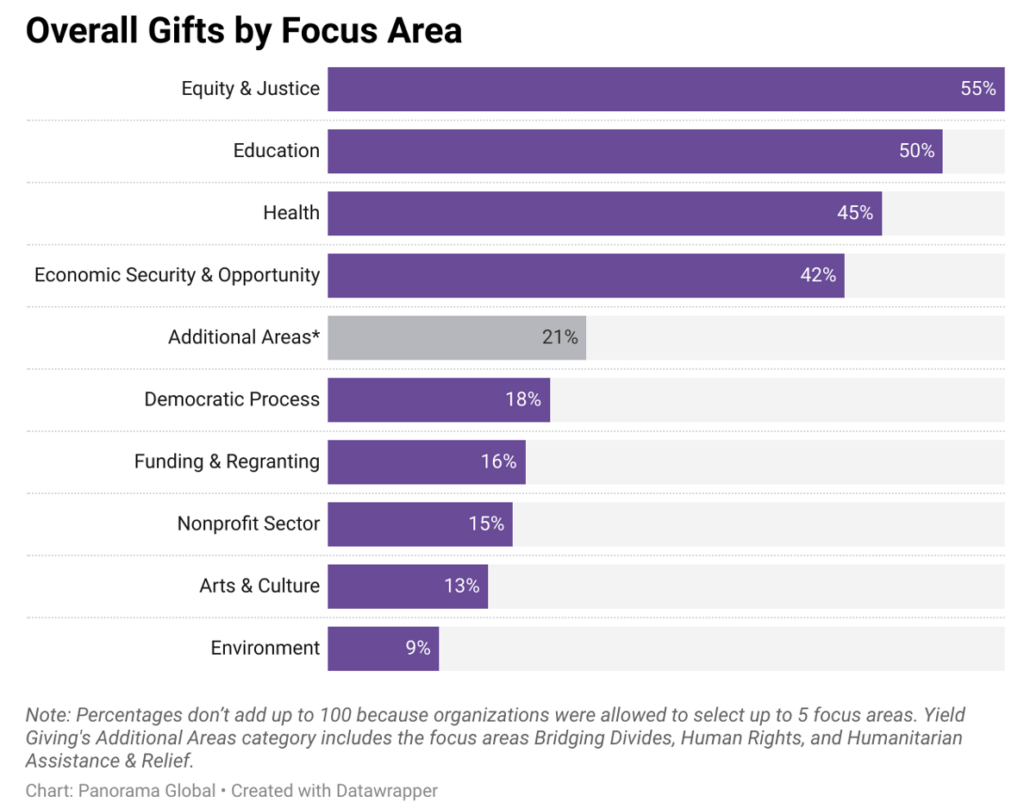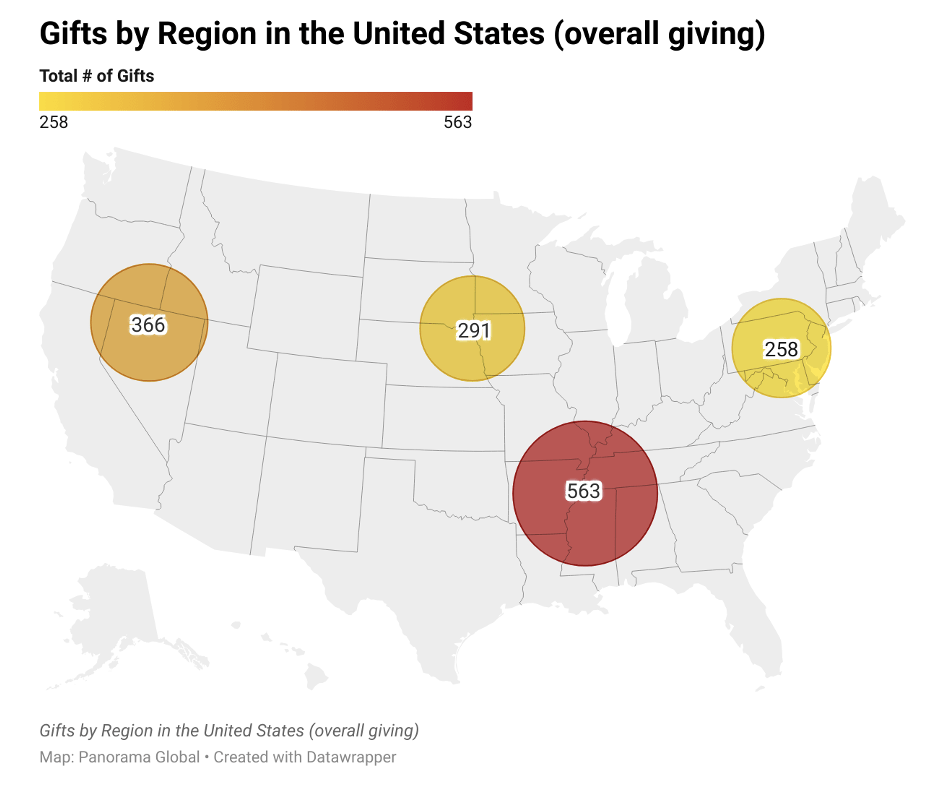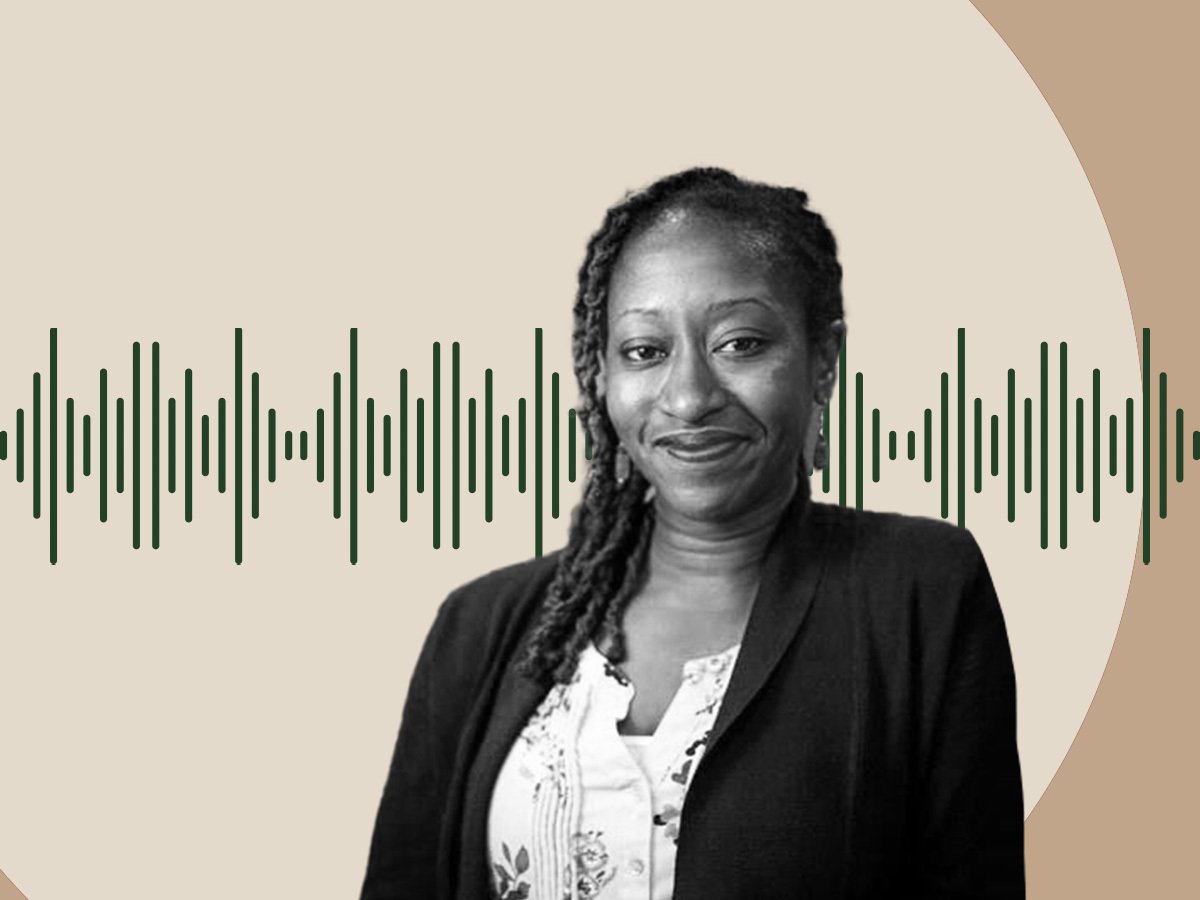
MacKenzie Scott, the billionaire philanthropist once married to Amazon CEO Jeff Bezos, has awarded $16 billion of her personal fortune in philanthropic grants through her Yield Giving foundation since 2019.
Scott’s giving—which consists mostly of unrestricted grants to nonprofits—continues apace, with over $2 billion awarded in 2023. The giving has become more consistent across the categories of recipients, though the individual gift sizes decreased substantially in 2023. (NPQ was a recipient of a grant from Yield Giving in 2021.)
Such are the findings of a report by the nonprofit Panorama Global, How MacKenzie Scott Shares Her Financial Fortune. Based on data published by Yield Giving, the report explores how funds have been awarded and offers a breakdown of the impact Scott’s philanthropy is having across many sectors.
MacKenzie Scott…has awarded $16 billion of her personal fortune in philanthropic grants.
Founded seven years ago, Panorama Group describes itself as a platform for social change and consults with nonprofits, philanthropists, change leaders, and social entrepreneurs. According to Panorama Group CEO Gabrielle Fitzgerald, the consultancy has kept a close eye on the distribution and impact of Scott’s charitable enterprise.
“When MacKenzie Scott started making her grants almost three years ago, we said, ‘This could be a real game-changer for both the nonprofit and philanthropic field—and we really want to understand the impact,’” Fitzgerald told NPQ, noting that the group has worked with some 120 groups that received a grant from Yield Giving.
Most of the grants awarded, in Fitzgerald’s experience, are roughly equivalent to one year of the receiving organization’s operating budget—something of a windfall for many, but generally not enough to reimagine an organization.
As Fitzgerald advised, organizations can generally “do one new thing” with such a grant: “You can create an endowment, you can create a rainy day fund, you can go deeper or you can go broader—but you can’t do everything.”
Organizations that do receive a grant from Scott’s charity, Fitzgerald noted, generally face an immediate—and often quite difficult—decision over how to spend the award, which typically comes without restraints.
“It’s an amazing opportunity,” said Fitzgerald. “So, be thoughtful and use it carefully and judiciously.”
Increasing Consistency
Among the report’s key findings is that MacKenzie Scott’s philanthropy has become more consistent in terms of both focus areas and geography. The total giving to date has been consistent with four priorities outlined by Scott in establishing the fund: Education, Equity & Justice, Economic Security & Opportunity, and Health.
Yield Giving is spreading out its giving across a wider range of recipients.
Fitzgerald noted that while much initial giving by Scott was targeted toward affiliate members of branch-style nonprofits—Boys and Girls Clubs and Habitat for Humanity chapters, for example—that has changed, with more awards in 2023 going to individual, independent nonprofit organizations. (A public list of recipients can be found on Yield Giving’s website.)
The report also identifies some changes over time to the allocation of Yield Giving funds by category. Comparing 2023 to prior years, giving to health increased, for example, while giving to education and arts and culture decreased.
The report also offers some interesting insights into Scott’s giving concerning the environment. While environmental giving was not among Yield Giving’s top-funded causes, gift sizes for the category of “Environment” were the largest, both overall and in 2023, indicating that Scott is focusing fewer resources on larger individual gifts when it comes to the environment.
Another intriguing pattern identified by the Panoramic Global report is a substantial decrease in the average size of individual gifts despite keeping up overall giving—suggesting that Yield Giving is spreading out its giving across a wider range of recipients. The report states:
In 2023, average gift sizes decreased substantially with only one exception. Arts & Culture was the only focus area that saw the average gift size increase by just under $1 million. This is especially interesting given that the percentage of gifts that went to Arts & Culture organizations decreased so substantially—suggesting Scott’s strategy shifted towards making fewer but larger gifts in this sector in 2023.

Sign up for our free newsletters
Subscribe to NPQ's newsletters to have our top stories delivered directly to your inbox.
By signing up, you agree to our privacy policy and terms of use, and to receive messages from NPQ and our partners.
The report further breaks down Scott’s giving within the top categories of causes being funded. Each subcategory reported includes dozens of recipients, if not more, as most recipients self-report their work within multiple subcategories:
- Equity and Justice
Making it the top area of giving by Yield Giving, more than half of the $16 billion in philanthropic gifts has gone to the category of “Equity and Justice.”
Within that category, most giving by far—about $743 million—has been toward causes and organizations working in the subcategory, as self-identified by recipients, of “Race and ethnicity.” These recipients range from Habitat for Humanity chapters to individual nonprofits working in racial equity to affordable housing organizations to providers of meals.
Behind “Race and ethnicity,” the subcategories of “Gender identity,” “Incarceration and justice system involvement,” “Immigration or migration,” and “Disability” were the next largest recipients of gifts, in that order.
- Education
With the category of “Education,” most funding—about $573 million—went to the subcategory of “Youth Development.”
After that came the subcategories of “Elementary, Secondary Education,” “Early Learning,” “Postsecondary, Tertiary Education,” and “Vocational Education,” in that order.
- Health
The subcategories of “Access to healthcare,” “Mental and behavioral Health,” and “Child development and welfare” received the most funding—more than $250 million each—with “Nutrition and food security” also receiving just over $200 million in funding.
- Economic Security and Opportunity
The subcategory of “Livelihoods and workforce development” received by far the most funding—$469 million—with another just over $600 million in gifts spread across the subcategories of “Access to housing and housing development,” “Economic development,” “Financial inclusion,” and “Agricultural development.”
Geographic Spread

“Scott’s giving remains critical in addressing disparities in these focus areas, and she shows no signs of slowing down.”
While Yield Giving has funded organizations and programs overseas, the bulk of gifts given—about 84 percent—have been to recipients based in the United States.
Within the United States, gifts have been awarded with a fairly even geographic spread, with the notable exception of the South, where 563 gifts have been awarded, compared to 366 gifts in the West, 291 in the Midwest, and 258 in the Northeast.
The report indicates that the states with the lowest number of grants per capita were Utah, West Virginia, Indiana, Kentucky, and Idaho.
Looking Forward
As Panorama Group’s report demonstrates, Scott’s philanthropy through Yield Giving is expected to remain a substantial force in the philanthropic sector: “Scott’s giving remains critical in addressing disparities in these focus areas, and she shows no signs of slowing down.” The report also suggests that spending has been measured and consistent with Yield Giving’s priorities, however broadly defined they may be.
If news reports of Scott’s net worth are to be believed, and if she remains committed to her self-proclaimed goal of giving roughly half that amount to philanthropic causes, Yield Giving should remain a robust source of philanthropic funding for years to come.












